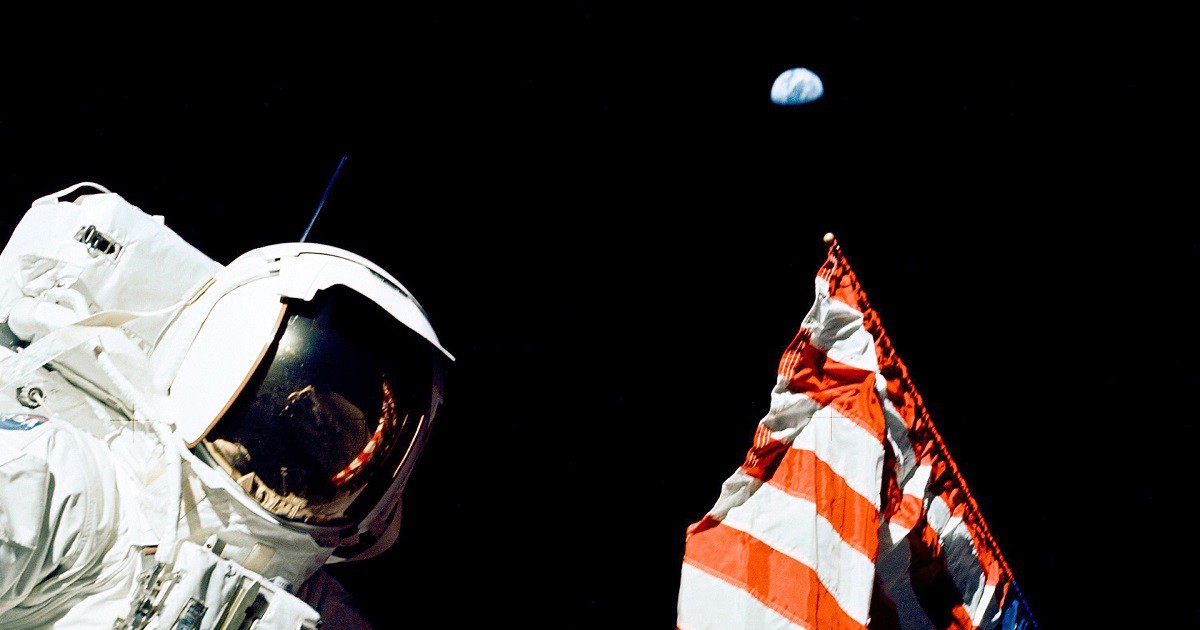NASA didn’t paste a picture of the Earth into photos from the moon

A video on Instagram suggests that a number of images of the Earth from space have been altered or “faked” by NASA.
The video, taken from a much longer interview with conspiracy theorist Dave Murphy, presents four images produced by NASA which he claims are proof that photos and film taken by the space programme are either made-up or manipulated.
These include an image from the Apollo 17 space mission, a composite image of the Earth produced in 2002 and a video of the Earth rotating.
These claims are all incorrect.
No evidence the Earth was pasted into a photo of the Apollo 17 lunar mission
The first photo shown is from the 1972 Apollo 17 lunar mission of astronaut Harrrison “Jack” Schmitt with a view of the Earth in the moon’s sky.
In the Instagram video, Mr Murphy says when you “drop the saturation” and “the levels” in the photo you can see a rectangular box around the image of the Earth, proving it “has been pasted in”.
This is not the case.
The rectangle around the Earth in the image is almost certainly the result of data being lost in low quality images and leading to pixelation (when a photo lacks the information to create smooth curves around objects within it, creating a blurry or boxy appearance around edges).
To test this we altered low and high quality versions of the same photo using the same instructions in the Instagram video. We found the “rectangular box” effect only occurred when we manipulated the low quality photos, strongly suggesting the box around the Earth is simply pixelation.
The story behind NASA’s composite image of Earth
Mr Murphy then presents another NASA image of the Earth (Blue Marble), claiming it’s a composite image made in Photoshop and that whoever created the image “got lazy” and used a clone tool to copy and paste the same sections of cloud across the Earth repeatedly.
Some of what he says is partly correct.
The image is a composite, as acknowledged by its creator Robert Simmon. It is a representation of a number of different images of the Earth stitched together over four months. The clouds were added based on 200 satellite scenes. All this information was then mapped onto a sphere to create the appearance of a globe.
Mr Simmon also said while some of the clouds were cloned it was because “there are gaps between orbits near the equator, and there’s no way to fill them with real data.”
Clouds not moving in animation of the Earth doesn’t prove anything
The Instagram video finishes with an animation of the Earth, taken from images of the Galileo space probe. Mr Murphy notes none of the clouds in the animation move over the course of 25 hours, later suggesting they may also have been duplicated in another set of satellite images.
The only reason they don’t appear to move, however, is because of the speed of the image.
The animation (created using images taken by the probe in 1990) shows that in real-time, and even sped up 600 times beyond that, the clouds don’t seem to move. This is only because the speed of the image means cloud movement is “not perceptible”. However at 3,600 times the speed of real-time, both the Earth’s rotation and the clouds can be clearly seen.


